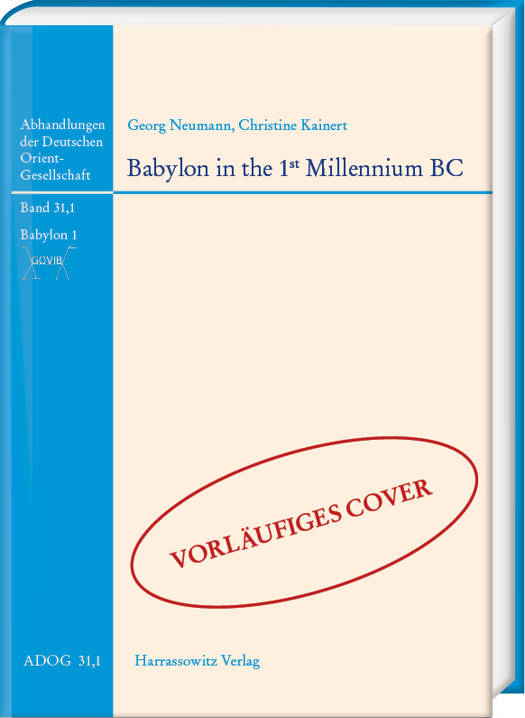
- Afhalen na 1 uur in een winkel met voorraad
- Gratis thuislevering in België vanaf € 30
- Ruim aanbod met 7 miljoen producten
- Afhalen na 1 uur in een winkel met voorraad
- Gratis thuislevering in België vanaf € 30
- Ruim aanbod met 7 miljoen producten
Zoeken
Babylon in the 1st Millennium BC
The archaeological Contexts of its non-palatial Neo-Babylonian Archives
Georg Neumann, Christine Kainert
€ 126,45
+ 252 punten
Omschrijving
Between 1899 and 1917, Robert Koldewey directed excavations in Babylon on behalf of the Deutsche Orient-Gesellschaft, during which the Neo-Babylonian layers in particular were uncovered. Through agreements on the shared use of finds, some artifacts, including cuneiform tablets, were transferred to the Vorderasiatisches Museum in Berlin, while others were housed at the Archaeological Museum in Istanbul and the Iraq Museum in Baghdad. A century later, the thorough and systematic study of these texts and their archaeological contexts has finally begun. This new sub-series of ADOG, named ADOG-Bab, is dedicated to the study of Babylon. The first volume of the new sub-series by Georg Neumann and Christine Kainert contains a detailed overview of the rediscovery of Babylon, an explanation of the documentation provided by the Koldewey's excavation, and a study of the contexts relating to the cuneiform finds from Neo-Babylonian private and temple contexts. For the first time, the spatial distribution and stratigraphic situation of the finds, most of which are unpublished accompanying finds, are presented together. Through careful investigation and analysis of these data, the particular construction phases of various temples and residential buildings in Babylon have been reconstructed, providing valuable insights into the history of this ancient metropolis in the 1st millennium BC.This volume has been peer-reviewed.
Specificaties
Betrokkenen
- Auteur(s):
- Uitgeverij:
Inhoud
- Aantal bladzijden:
- 522
- Taal:
- Engels
- Reeks:
Eigenschappen
- Productcode (EAN):
- 9783447123747
- Verschijningsdatum:
- 21/05/2025
- Uitvoering:
- Hardcover
- Afmetingen:
- 210 mm x 297 mm

Alleen bij Standaard Boekhandel
+ 252 punten op je klantenkaart van Standaard Boekhandel
Beoordelingen
We publiceren alleen reviews die voldoen aan de voorwaarden voor reviews. Bekijk onze voorwaarden voor reviews.











